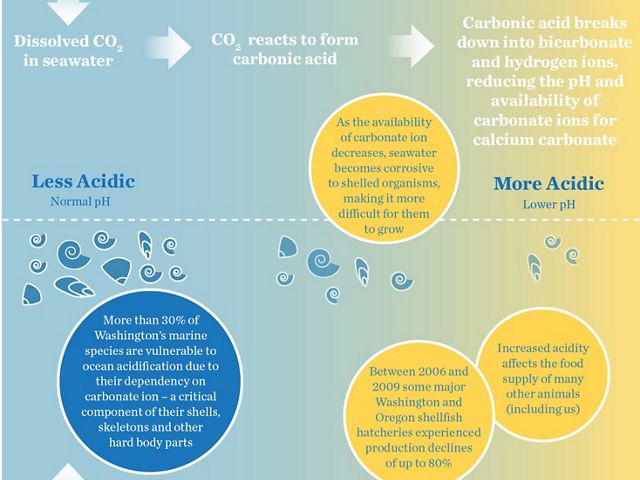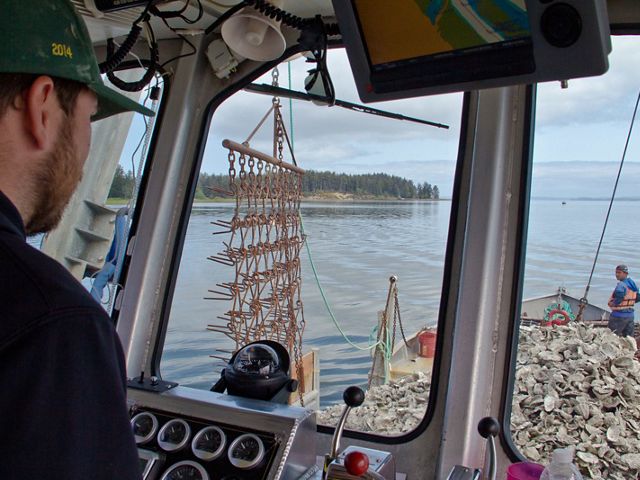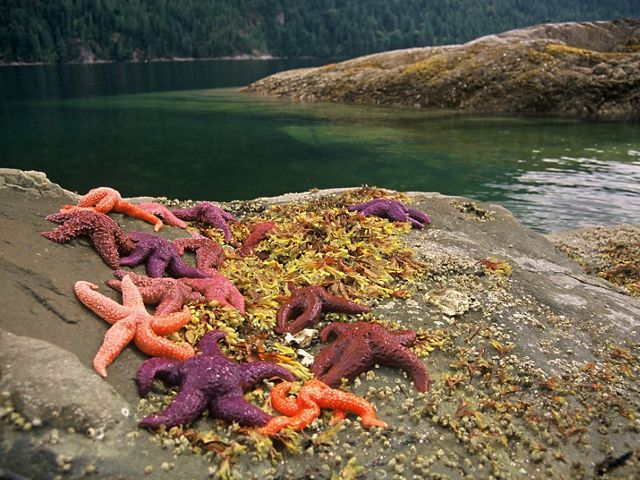Forests Reduce Ocean Acidification and Climate Change
Kara Cardinal, Marine Projects Manager
Throughout Washington, everything — from the tops of mountains to the bottom of the ocean — is interconnected. Salmon bring nutrients from the ocean upstream into rivers where they in turn provide food for eagles and bears and eventually enrich forest plants.
What we put into our waters upstream affects the animals and plants downstream. Even forests throughout the Evergreen State can address challenges that extend deep into our oceans. But similar to all these other connections, that story is not so simple.
The story begins with carbon dioxide (CO2) in our atmosphere, with combustion of fossil fuels as a primary source of carbon pollution. Our global oceans absorb roughly a quarter of the CO2 released by human activities every year — resulting in a change to seawater chemistry known as ocean acidification.

This is a slow, long-term process that occurs as a result of the lowering of pH levels in seawater, creating a more acidic marine environment. This seawater change can have detrimental impacts on many shelled organisms, with rippling effects felt throughout the marine food web and on the coastal communities and economies that depend upon vibrant marine resources for their livelihoods.

A simple math equation would point us in the direction that if we reduce CO2 in the atmosphere, we can reduce the effects of ocean acidification. Limiting the combustion of fossil fuels is an obvious solution, and TNC is working on that at a global scale. But let’s bring in another factor to this equation: forests.
Healthy forests have the ability to absorb CO2 from the atmosphere — what is often referred to as a “carbon sink.” Thus, deforestation is another major contributor to atmospheric CO2. When forests are cut down, we not only lose important repositories that breathe in and sequester atmospheric carbon. If timber is burned or even left to rot, carbon once stored in the felled trees is also released. A significant amount of carbon is stored below ground in the soil and roots as well, and this too can be released following the disturbance of deforestation.
Our approach to forest management can have implications for our oceans. With their potential to either release or absorb CO2, there is a growing focus on managing forests to enhance their capacity to capture and store it. Thus, healthy forests can take in carbon that the oceans would otherwise absorb.

But a strategic, science-based approach is key. One might think that the more trees the better. However, a recent study by The Nature Conservancy and partners actually found that thinning young forests can allow trees to grow larger, increasing their value in terms of long-term carbon storage, as well as promoting wildlife habitat, resilience in the face of wildfires and creating potential timber production.
In Washington, we are actively managing and restoring roughly 70,000 acres of forested land throughout the state. We are also bringing together forest collaboratives with landowners, the timber industry, environmental nonprofits, community groups, tribes and state and federal agencies to promote responsible management of our forestlands. These partnerships foster collaborative, locally driven, large landscape projects that improve forest and community resilience, reduce wildfire risk and generate economic development for both rural and urban communities.

Conserving and actively managing our forests in the most valuable way helps foster a healthy connection between Washington’s ecosystems. Healthy forests can play a part in reducing the drivers of ocean acidification, protecting our seas as well as the communities that depend upon them.
